NIL
Arkansas hires a game
There’s a new development in Arkansas’ pursuit of the NIL buyout from two former players. Arkansas Edge has hired a potential game-changing lawyer, as reported by CBS Sports reporter Brandon Marcello. Arkansas hires Tom Mars in quest for NIL buyouts Anyone with a scintilla of experience in the legal landscape of the Natural State knows […]
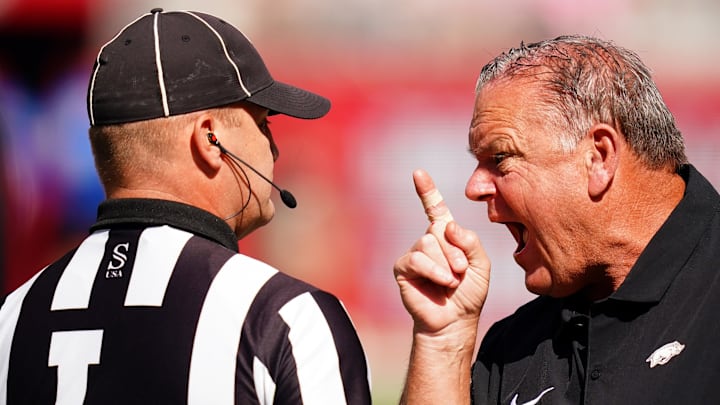

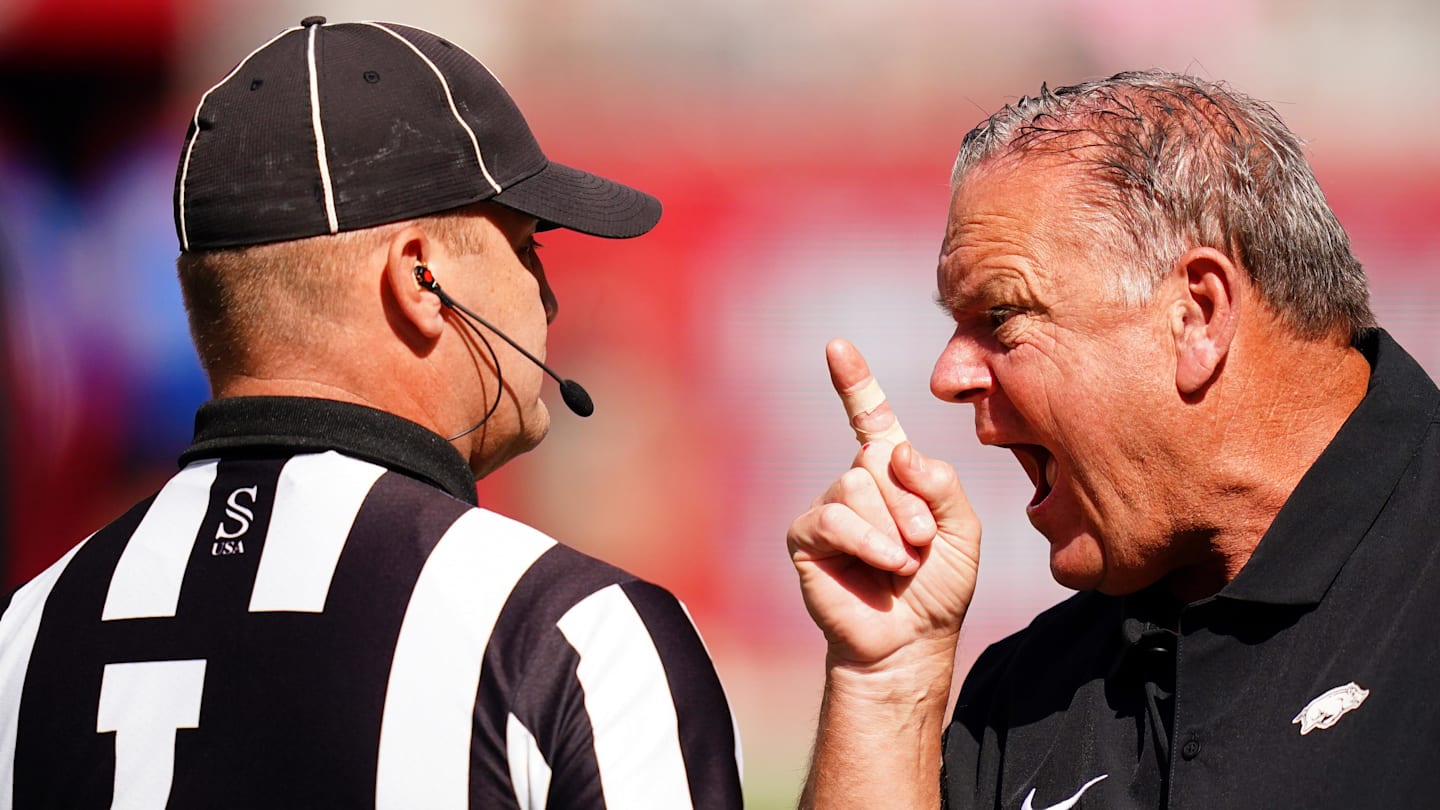
There’s a new development in Arkansas’ pursuit of the NIL buyout from two former players. Arkansas Edge has hired a potential game-changing lawyer, as reported by CBS Sports reporter Brandon Marcello.
Arkansas hires Tom Mars in quest for NIL buyouts
Anyone with a scintilla of experience in the legal landscape of the Natural State knows who Thomas Mars is. Mars spent his childhood in Bethesda, Md., but after being denied by multiple schools back home on the East Coast, he attended law school at the University of Arkansas. Since then, he has counseled public officials, high-profile clients, and mega-corporations, including in-house counsel for Wal-Mart.
Lately, Mars has been entrenched in the NCAA NIL/transfer portal conversation. He’s represented many players and institutions in the recent barrage of legal cases hitting the courts. However, his legendary status among Arkansas fans may have begun with the defamation case between former Razorback head coach Houston Nutt and Hogs rival—and Nutt’s former employer—Ole Miss.
After only asking for a private apology from the university, which they refused, Mars brought the Rebels and new head coach Hugh Freeze to their knees. He uncovered Freeze and others helped to create the narrative that Ole Miss’ recruiting violations started with Nutt and, in the process, revealed Freeze’s now famous phone records with calls to an escort company.
Afterward, Nutt warned the Wall Street Journal about the dangers for those opposed to Mars, “When you have Tom Mars on the other sideline, you better buckle up.” That now includes the Iamaleavas.
Former Arkansas quarterback Madden Iamaleava flipped his commitment from UCLA to Arkansas on national signing day. But less than five months later, the 4-star QB entered the transfer portal to join his brother, Nico, where he originally committed. Shortly after, Arkansas athletic director Hunter Yuracheck posted a graphic on X (formally Twitter) that encouraged Arkansas Edge to fight for the NIL buyouts.
— Hunter Yurachek (@HunterYurachek) April 22, 2025
Within a few days, news broke that the collective had sent demand letters to two former student-athletes, including one demanding $200,000 from Iamaleava. Initially, the other letter was thought to have gone to another freshman, but according to Marcello, the other player is Dazmin James.
James failed to record a catch during the regular season, but after most of Arkansas’ production left before the Razorbacks’ bowl game against Texas Tech, he earned himself a starting spot against the Red Raiders. He exploded with a three-reception, 137-yard, one-touchdown game that gave Arkansas fans hope about the WR room going into the 2026 season. But those hopes were quickly dashed when he entered the transfer portal four days later.
NIL
College football, basketball or other? How schools will share revenue
Kirby Smart on college football’s future Kirby Smart urges leaders to prioritize the game’s future over personal or conference agendas in playoff talks. How much capped revenue share money will each team within an athletic department receive? That’s left to schools to decide. Welcome to “Capology.” Conventional wisdom will lead many schools to distribute most […]

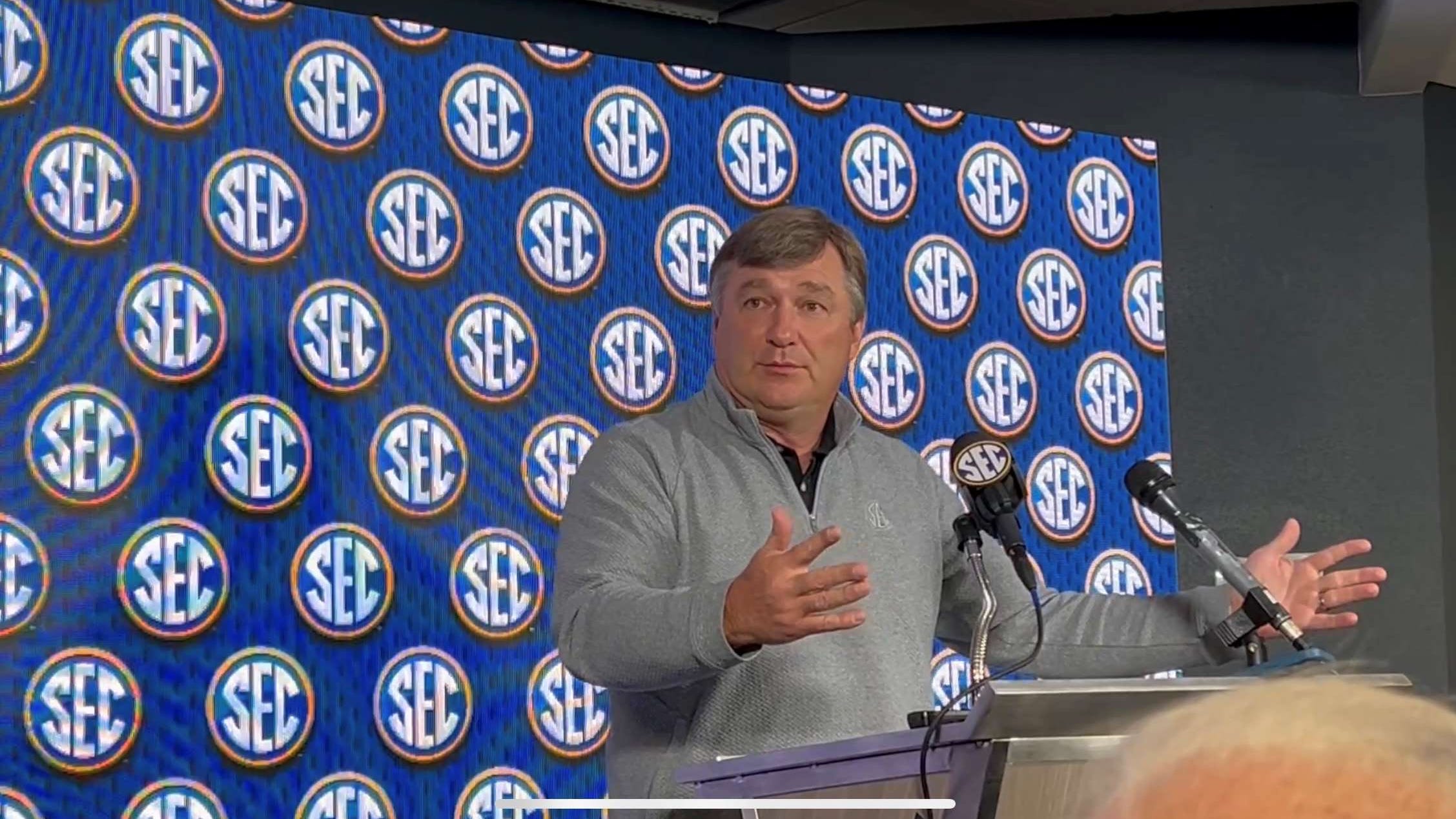
Kirby Smart on college football’s future
Kirby Smart urges leaders to prioritize the game’s future over personal or conference agendas in playoff talks.
- How much capped revenue share money will each team within an athletic department receive? That’s left to schools to decide. Welcome to “Capology.”
- Conventional wisdom will lead many schools to distribute most of their revenue share allotment to football and men’s basketball, but opportunities exist for deviations.
- Schools’ autonomy opens the door for some outside-the-box spending ideation. Schools have the chance to identify and spend on the sports that matter most to their fans and school fabric.
They’re playing a new game at college athletic departments. We’ll call it “Capology,” and game play tasks athletic directors to be the banker.
A legal settlement approved June 6 authorizes schools to directly pay athletes from athletic department coffers in the form of revenue sharing, beginning July 1. That revenue sharing will be capped this year at about $20.5 million per school.
Athletes’ separate NIL deals brokered with outside entities won’t count against a school’s revenue share cap.
How much capped revenue share money will each team within an athletic department receive? That’s left to individual schools to decide.
Commissioners from the Power Four conferences plus the rebuilt Pac-12 confirmed their schools retain the authority to determine the percentage breakdown of how they’ll distribute their capped allotment with their teams.
Decisions, decisions, for athletic directors tasked to dole out the dough.
“Things get very political really quick of who gets what resources,” Mississippi State athletic director Zac Selmon said, “but I think you’ve got to continue to invest in programs that generate the revenue. That’s No. 1.
“And No. 2, would be, what’s the fabric of your school? For us, at Mississippi State, baseball is a huge deal.”
Selmon’s assessment holds true to the way many athletic directors view this: The top revenue-generating sports of football and men’s basketball will get the lion’s share of revenue share dollars – about 90% combined across the two sports – with a smaller fraction going to women’s basketball, and other bedrock sports that help form the school’s identity will receive the leftover dollars.
MAJOR BOOST: The teams that benefit from playoff expansion
BIG FALL: SEC propaganda campaign shows it’s no longer top playoff dog
Within the SEC, at least, it’s widely believed many schools will use a baseline distribution model that uses the settlement’s backpay formula as a guide. Using this model, about 75% of a school’s revenue sharing cap will go to the football program, with about 15% going to men’s basketball, 5% to women’s basketball, and 5% for other sports.
Those 75-15-5-5 percentages, though, are not mandated, either within the SEC or beyond.
The breakdown could vary, as an institution sees fit.
“Conference to conference, school to school, sport revenue share allocations will vary based on several factors,” Oklahoma athletic director Joe Castiglione said.
Schools’ autonomy opens the door for some outside-the-box thinkers to emerge within “Capology.” This, too, is an opportunity for schools to identify and spend on the sports that matter most to their fans, and where they think they can win big.
“We’re giving our institutions discretion,” Big Ten commissioner Tony Petitti said, a sentiment echoed by the other power conference commissioners, “and they want that discretion.”
Conventional wisdom versus outside-the-box spending
Take Wisconsin, as an example.
The Badgers’ women’s basketball team last made the NCAA Tournament 15 years ago. Its robust volleyball program nearly doubles the women’s basketball team’s average attendance. Why shouldn’t Wisconsin zig where others zag and apply a higher percentage of its revenue sharing dollars toward volleyball, and less toward women’s basketball?
I’m thinking that rationale should apply, too, to Nebraska and Penn State, where powerhouse volleyball programs outperform and outdraw women’s basketball.
These Big Ten schools I’ve referenced have not disclosed their distribution percentage plan. I’m just spit-balling some “Capology” spending ideas that could allow schools to further excel in sports where they typically thrive.
Here’s another test subject: Florida women’s basketball last made a Sweet 16 in 1998, and its attendance limps behind SEC peers. The Gators’ softball program is a Women’s College World Series regular. Might Florida be better off spending less than SEC peers on women’s hoops and more on softball, in an attempt to gain separation in a diamond sport that enjoys relevance within the SEC?
In contrast, South Carolina and LSU shouldn’t put women’s basketball on the back burner. There, the women’s basketball teams outperform and outdraw their men’s counterparts. So, should the men’s programs really receive so much more in revenue sharing than the women?
“I think we need to be a little more generous than 5%,” South Carolina coach Dawn Staley told The State newspaper earlier this year, referencing the 5% baseline within the SEC for women’s basketball. “That’s my feel on it.”
Who could blame Staley for believing her team shouldn’t be shortchanged? It’s up to her institution, though, to decide how to divvy up the money. A school could even try to outspend South Carolina women’s basketball to try to accelerate past the Gamecocks.
Many schools will follow conventional wisdom on how dollars should be spent, but the opportunity exists to break from the mold.
Texas Tech revealed it plans to share 17 to 18% with its men’s basketball team, which reached the Elite Eight last season, and 2% to its women’s basketball team, which last reached the NCAA Tournament in 2013.
Priorities, right?
Football will receive most revenue share, but how much?
Consider a school that usually struggles in football. Should it allocate a smaller revenue share percentage to football than its peers and apply more money toward other sports? Perhaps, that’s worth mulling at schools where basketball or Olympic sports shine. Here’s an alternate idea: If you’re lagging in football, spend an even higher percentage of your allotment on football than the baseline, to try to close the talent gap.
Indiana showed how quickly a football team can transform from irrelevant to playoff qualifier in an era in which players may transfer without penalty.
Is it worth the risk to spend big, though, to play catchup, knowing that strategy would reduce the revenue share money available for other sports? That’s a question athletic directors must ponder.
Schools aren’t required to publicly disclose their distribution percentage plan, either, meaning one school won’t necessarily know exactly how its distribution model compares to another school.
Football revenues provide the financial lifeblood of college sports, but nothing says a basketball blueblood couldn’t spend less of its revenue share allotment on football, as compared to the industry standard, and outpace its peers on basketball spending.
“There will be some institutions that might give 60% to football and 20% to men’s basketball, or any variation one could think of,” Castiglione said, speaking in general terms and not in reference to a particular school. “That’s an institutional choice.”
Just another decision when playing “Capology.”
Blake Toppmeyer is the USA TODAY Network’s national college football columnist. Email him at BToppmeyer@gannett.com and follow him on X @btoppmeyer.
NIL
BYU’s AJ Dybantsa Becomes College Basketball’s Top NIL Earner
BYU’s AJ Dybantsa Becomes College Basketball’s Top NIL Earner originally appeared on Athlon Sports. BYU’s AJ Dybantsa is already turning heads before the 2025-26 college basketball season. As the No. 1 player in the country, he’s already projected as the top pick in the 2026 NBA Draft. But his moves off the court are just […]
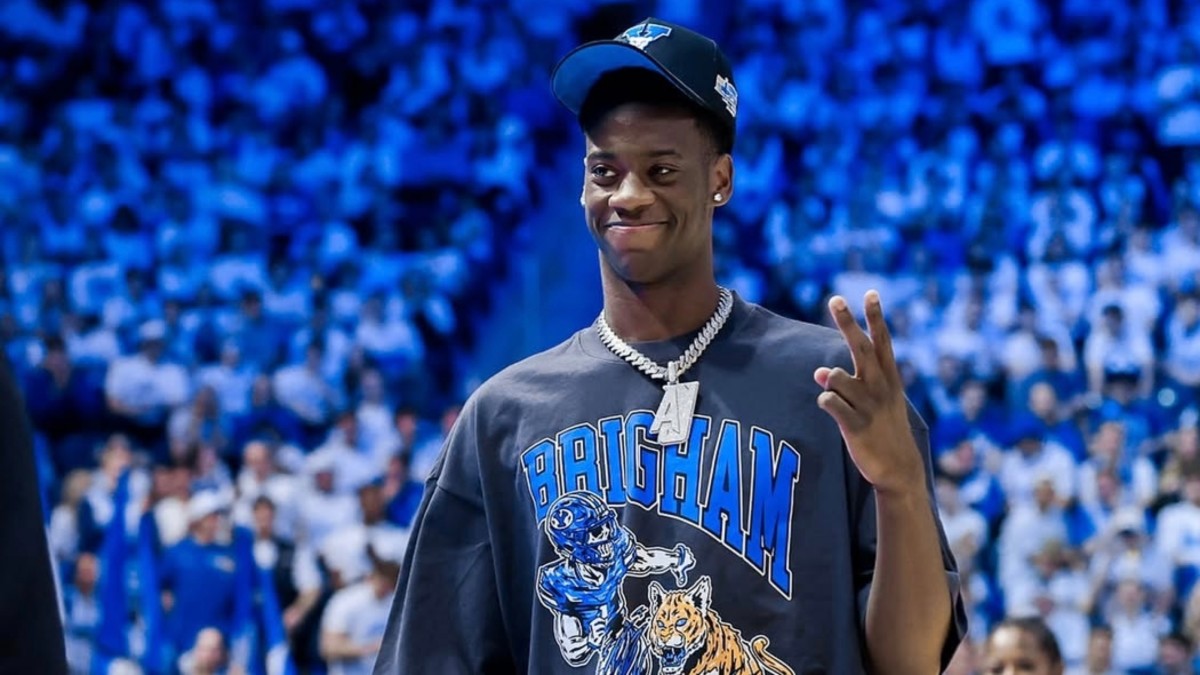
BYU’s AJ Dybantsa Becomes College Basketball’s Top NIL Earner originally appeared on Athlon Sports.
BYU’s AJ Dybantsa is already turning heads before the 2025-26 college basketball season. As the No. 1 player in the country, he’s already projected as the top pick in the 2026 NBA Draft. But his moves off the court are just as good.
Advertisement
Dybantsa saw a significant jump in his On3 NIL valuation recently. He moved up to $4.1 million and cracked the top five for the first time in his career. As it stands now, the 6-foot-9 power forward is only $200K away from Miami QB Carson Beck at No. 2 ($4.3M) and $100K from Ohio State receiver Jeremiah Smith ($4.2M). Arch Manning is firmly at the top with a valuation of $6.8 million.
However, Dybantsa is the top college basketball earner after landing deals with Nike and Red Bull. Dybantsa is on a contract with BYU to receive over $7 million this season, according to Adam Zagoria of the New York Times. An NIL offering he denied at the McDonald’s All-American Game.
Related: BYU Basketball Shows Interest in Rising International Star
BYU has picked up the pace on the NIL trail very quickly. One of the biggest contributors is Utah Jazz and Utah Mammoth owner Ryan Smith. But underneath it all is Kevin Young. The Cougars coach came to Provo after being an NBA assistant for the Phoenix Suns and Philadelphia 76ers. His detailed guidance and pro-ready approach is why Dybantsa decided to sign with BYU.
Advertisement
Related: BYU Cracks ESPN’s Future Power Rankings Top 25
As the season quickly approaches, Dybantsa will be part of the most hype-filled year in BYU Basketball history. The Cougars projected starting lineup has many national outlets putting them as a national title contender and on a level playing field in the Big 12 with Houston, who is coming off a heartbreaking loss in the National Championship to Florida.
The upcoming season will be fun to watch as Dybantsa has already said he’s one-and-done before turning pro.
This story was originally reported by Athlon Sports on Jun 12, 2025, where it first appeared.
NIL
The Dirty Nil Drop Urgent Single 'Rock N' Roll Band'
The Dirty Nil have shared the latest taste of upcoming album ‘The Lash’ in the form of urgent single ‘Rock N’ Roll Band’. With ‘The Lash’ set for release on July 25 via Dine Alone Records, it follows recent single ‘Gallop Of The Hounds’. A razor-sharp gut-punch of a track, on ‘Rock N’ Roll Band’ […]


The Dirty Nil have shared the latest taste of upcoming album ‘The Lash’ in the form of urgent single ‘Rock N’ Roll Band’.

With ‘The Lash’ set for release on July 25 via Dine Alone Records, it follows recent single ‘Gallop Of The Hounds’.
A razor-sharp gut-punch of a track, on ‘Rock N’ Roll Band’ frontman Luke Bentham has shared:
“This is the first song I wrote for The Lash… I don’t remember what particular aspect of the industry had got my goat that day but I’d worked myself up to a fine lather. I blasted out the whole song in 30 minutes and instantly felt better. Though the song is pretty negative, it makes me happy. This one is for all the road dogs, we salute you.”
Take a listen below:
‘The Lash’ will arrive ahead of the band’s return to the UK when they will play London on October 25 and Leeds on the 26th as part of the Common Thread tour with Hot Water Music, Spanish Love Songs, Comeback Kid and Joyce Manor.
Check out the artwork and tracklisting for the album below:

1) Gallop of the Hounds
2) Fail in Time
3) That Don’t Mean It Won’t Sting
4) Rock ‘n’ Roll Band
5) This Is Me Warning Ya
6) Do You Want Me?
7) Spider Dream
8) They Won’t Beat Us
9) Hero Narrative
10) I Was A Henchman
NIL
Breaking down house settlement and how it could impact UF athletics
Swampcast breaks down Florida softball at WCWS, Florida basketball The Sun’s Kevin Brockway and Noah Ram and Kevin Brockway are joined by Nathan Geise of the Lubbock Avalanche-Journal to break down Florida softball, Texas Tech in WCWS. The University of Florida can now pay athletes directly due to the House vs. NCAA settlement. Florida football […]
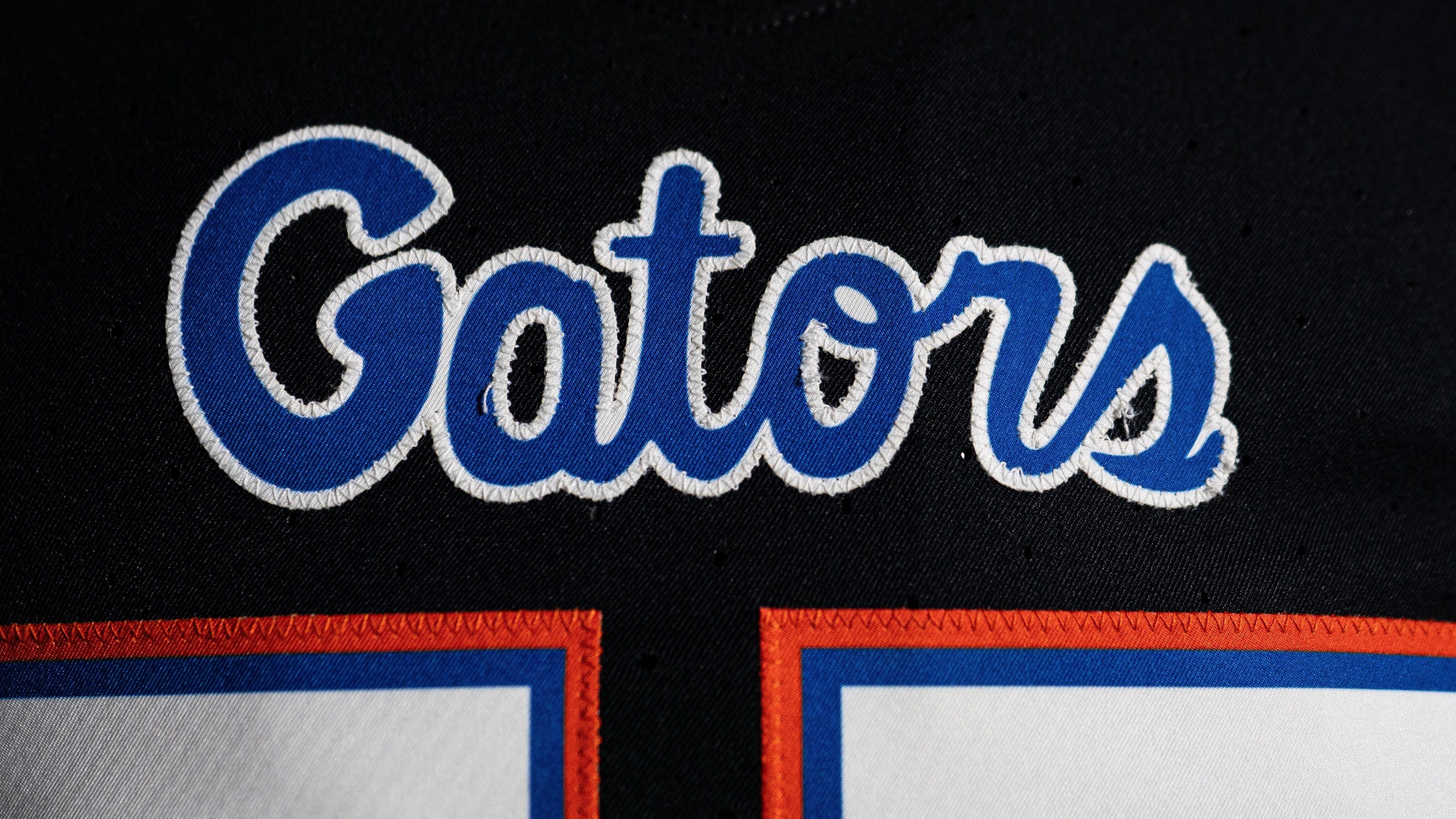
Swampcast breaks down Florida softball at WCWS, Florida basketball
The Sun’s Kevin Brockway and Noah Ram and Kevin Brockway are joined by Nathan Geise of the Lubbock Avalanche-Journal to break down Florida softball, Texas Tech in WCWS.
- The University of Florida can now pay athletes directly due to the House vs. NCAA settlement.
- Florida football and men’s basketball are likely to receive the majority of the $20.5 million allocated for athlete compensation.
- NIL deals exceeding $600 will be reviewed for legitimacy by a clearinghouse monitored by Deloitte.
The landmark House vs. NCAA Settlement, approved on June 6 by U.S. District Court Judge Claudia Wilken, opens the door for athletes to be paid directly by the University of Florida Athletic Association.
According to the settlement, starting on July 1, UF can spend up to $20.5 million on its athletes, which includes funding scholarships and paying them directly. How that money is allocated by sport remains to be seen. Florida athletic director Scott Stricklin was unavailable for comment this week and may or may not choose to disclose how the money will be distributed.
UF has the potential to provide financial support to all 21 of its men’s and women’s sports, either by paying athletes directly or funding scholarships. Priority, though, will likely be given to two major revenue producing sports, Florida football and Florida basketball, which is coming off a national championship season. A model prescribed in the preliminary House settlement calls for about 75% to be paid to football players, 15% to men’s basketball, 5% to women’s basketball and 5% to other sports.
That’s based on the revenue generated by each sport. Per UF’s latest NCAA financial report, football generated $100,796,971 in revenue in fiscal year 2024, followed by men’s basketball at 14,344,967 and baseball at 4,328,038. Football accounted for 50.4% of UF’s total athletic department revenues ($200,094,587), while basketball accounted for 7.2%.
Stricklin released a statement on June 7, the day after the settlement was reached.
“The University of Florida Athletic Association welcomes the recent court ruling allowing schools to directly share revenue with student-athletes,” Stricklin said in the statement. “This decision marks an important step forward for college athletics, and we remain committed to supporting Gator athletes on and off the field. Beyond financial opportunities, the UAA will continue to provide world-class training, academic support, and career development to help our Gators succeed during their time at UF and beyond.”
Can Florida athletes still receive outside endorsements?
Florida athletes can still receive outsides Name, Image and Likeness endorsements based on the value of their brands. But those deals will undergo more scrutiny.
All NIL deals of more than $600 will pass through a clearinghouse which will determine the legitimacy of the deal based on the athlete’s market value. For example, Cooper Flagg’s multi-million-dollar deal with New Balance would pass the smell test based on coming into college basketball as the nation’s top college recruit playing for one of the sport’s biggest college basketball brands, Duke. But under the new system, the days of promising a five-star offensive lineman a six-figure deal NIL deal out of high school to keep from signing with a rival school are likely over.
The accounting firm Deloitte will monitor the NIL clearinghouse. Athletes will submit NIL deals of more than $600 to an online platform called NIL Go, where they will be reviewed.
The NCAA will no longer be involved in rules enforcement, replaced by the College Sports Commission, which was formed by and has received the full backing from major conference commissioners. The College Sports Commission will hand out punishments to schools who break rules regarding NIL and revenue sharing.
“Our schools want rules,” Big 12 commissioner Brett Yormark told a group of national media outlets this week. “We’re providing rules, and we will be governed by those rules. And if you break those rules, the ramifications will be punitive.”.
Mit Witner, a Kansas City-based attorney specializing in sports law and NL legislations, expects more legal challenges to arise due to the NCAA’s inability to secure an antitrust exemption.
“If the College Sports Commission says if an athlete wants to remain eligible, they can’t do this deal to play college sports, it’s acting as a limit on the college athlete’s compensation,” Witner said. “There’s no antitrust exemption now for that, so I definitely think there will be litigation on that issue.”
How Florida football has prepared for paying its players
Florida football coach Billy Napier said he expects revenue share to provide more stability in terms of compensating football players entering the 2025 season.
In Napier’s first three seasons, he relied on funds and NIL deals generated from Florida Victorius and the now defunct Gator Collective. A botched NIL deal by the Gator Collective for five-star quarterback recruit Jaden Rashada resulted in Napier, booster Hugh Hathcock and former UF staff member Marcus Castro-Walker getting sued by Rashada for fraud and vicarious liability.
Last February, Napier made two front office hires to the football program, adding Benjamin Elsner as director of football strategy and Nick Polk as Associate Athletic Director/Football General Manager,
Polk spent 17 seasons as Director of Football Operations for the Atlanta Falcons (2004-21), where he was responsible for salary cap management, including draft negotiations, contract proposals, player contracts, coaches’ contracts, trades and trade value analysis. Those skills will be put to test in the new college sports revenue share era.
“His experience with the cap management, the strategy around contracts, that’s part of the game, right?” Napier said last March. “He’s hit the ground running.”
Kevin Brockway is The Gainesville Sun’s Florida beat writer. Contact him at kbrockway@gannett.com. Follow him on X @KevinBrockwayG1. Read his coverage of the Gators’ national championship basketball season in “CHOMP-IONS!” — a hardcover coffee-table collector’s book from The Sun. Details at Florida.ChampsBook.com
NIL
Maryland NIL Collective Pushes Back on Ja'Kobi Gillespie Lawsuit
Maryland NIL Collective Pushes Back on Ja’Kobi Gillespie Lawsuit originally appeared on Athlon Sports. What started as a breakout season for Ja’Kobi Gillespie at Maryland has unraveled into a legal battle that could shake the foundation of NIL deals nationwide. Advertisement Advertisement Advertisement Gillespie, who averaged 14.7 points and earned second-team All-Big Ten honors before […]
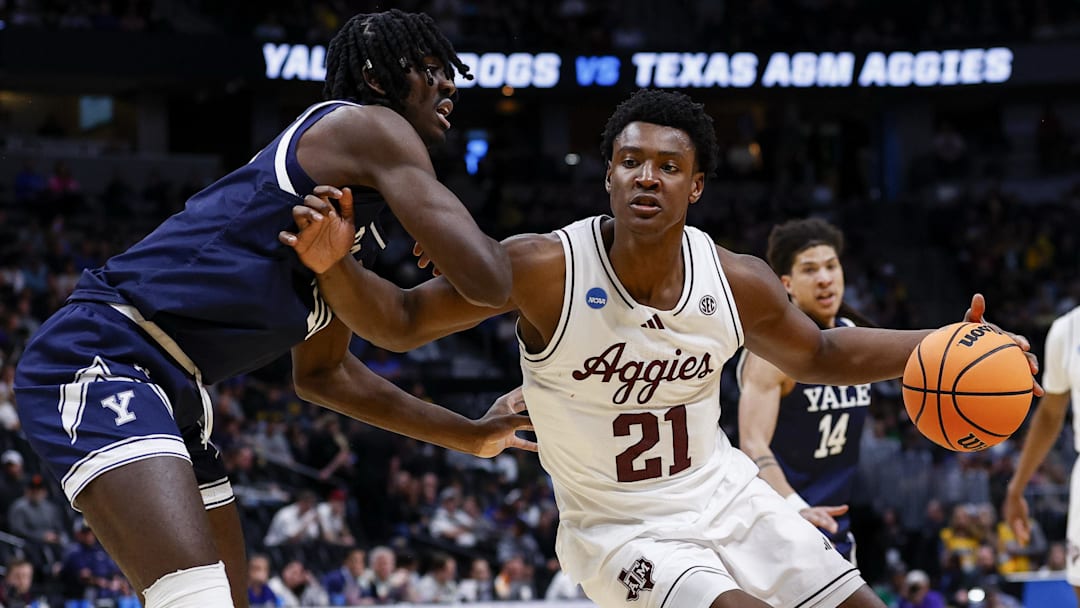

Maryland NIL Collective Pushes Back on Ja’Kobi Gillespie Lawsuit originally appeared on Athlon Sports.
What started as a breakout season for Ja’Kobi Gillespie at Maryland has unraveled into a legal battle that could shake the foundation of NIL deals nationwide.
Advertisement
Gillespie, who averaged 14.7 points and earned second-team All-Big Ten honors before transferring to Tennessee, is suing Blueprint Sports, the operator of Maryland’s NIL collective, over what his father claims is $100,000 in unpaid compensation. But Maryland’s NIL leadership is calling the claims baseless, and they’re not backing down.
“It was always explained to the Gillespie family that if they transferred, the payments would stop, as it’s a year-round commitment,” said Turtle NIL founder Harry Geller, who helped negotiate the original deal before Blueprint took over.
The legal spat hinges on a key detail: whether Gillespie’s contract explicitly stated payments would continue even after entering the transfer portal. According to Geller, every contract he drafted included a transfer clause that nullified payments. However, Gillespie’s final contract, rewritten by Blueprint, apparently omitted that clause.
Still, Geller insists that “strong language in the BPS contract referring to the consequences of transferring” protects the collective from liability.
Advertisement
The stakes are high, not just for Gillespie, but for every player banking on NIL guarantees. If Gillespie’s side prevails, it could set a precedent that forces collectives nationwide to pay more attention to contract continuity and transparency.

Maryland Terrapins forward Julian Reese, center Derik Queen, and guard Ja’Kobi GillespieSteven Bisig-Imagn Images
His father, Byron Gillespie, told The Baltimore Sun that the lack of payment reflects broader dysfunction in Maryland’s NIL program.
“When Willard left, they pretty much quit paying all the players… There were players that did get their money and players that didn’t and are still fighting for it.”
Gillespie has since landed a reportedly $2 million NIL package at Tennessee, nearly five times what he earned at Maryland. That success is exactly why Geller questions the lawsuit’s motive.
Advertisement
“Why he is even pursuing this is beyond me,” Geller said. “He made the most of the opportunity and turned it into a major payday.”
Maryland’s program is still reeling from the departure of head coach Kevin Willard, who clashed with administration over NIL support. The Gillespie dispute only adds fuel to the perception that Maryland is lagging in the name, image, and likeness arms race.
For future recruits and current student-athletes, the outcome of this lawsuit could influence how NIL contracts are structured, enforced, and interpreted, especially in cases where athletes transfer.
Whether it’s a cautionary tale or a catalyst for change, Gillespie’s legal battle underscores one truth: NIL money may be flowing, but the rules are far from settled. Collectives, athletes, and universities alike must brace for a more regulated, and litigated future.
Advertisement
Related: Paul Finebaum Warns House NIL Ruling Is a “Ticking Time Bomb”
Related: The NCAA is Dead, Long Live the Game
This story was originally reported by Athlon Sports on Jun 11, 2025, where it first appeared.
NIL
Tennessee softball pitcher Peyton Tanner transfers to Baylor after freshman season
Tennessee softball pitcher Peyton Tanner has transferred to Baylor, she announced June 11. Tanner never publicly announced she was in the transfer portal, but posted her commitment to the Bears on Instagram. She’s the third player transfer out after Tennessee’s run to the Women’s College World Series. Sophomore infielder Ryan Brown and junior infielder Destiny […]
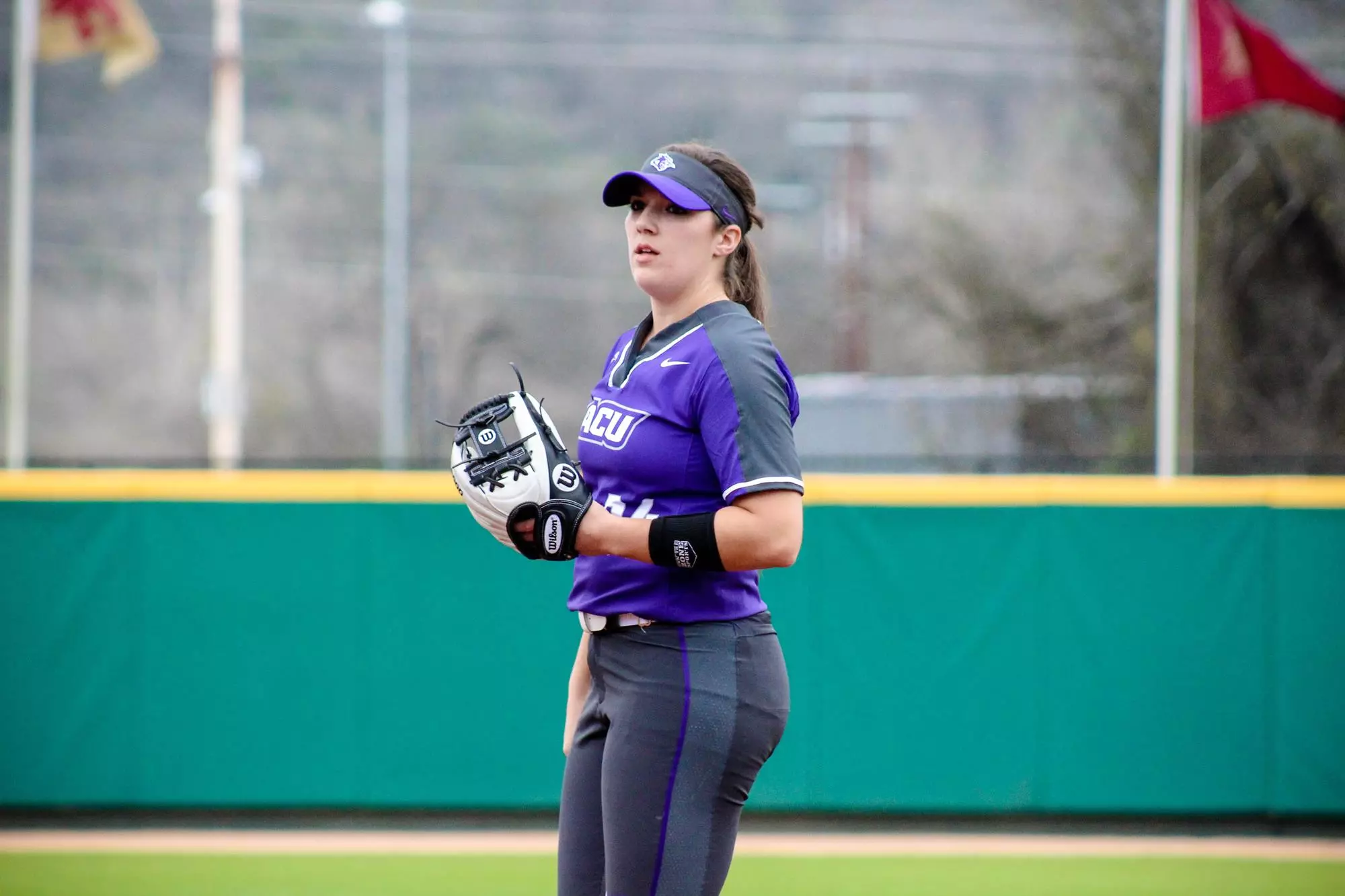

 Tennessee softball pitcher Peyton Tanner has transferred to Baylor, she announced June 11.
Tennessee softball pitcher Peyton Tanner has transferred to Baylor, she announced June 11.
Tanner never publicly announced she was in the transfer portal, but posted her commitment to the Bears on Instagram. She’s the third player transfer out after Tennessee’s run to the Women’s College World Series. Sophomore infielder Ryan Brown and junior infielder Destiny Rodriguez also entered the transfer portal since the season ended in the WCWS semifinals.
Baylor is located about four hours from Tanner’s home town of Lake Jackson, Texas.
The freshman didn’t get a lot of playing time, only starting in two of her nine appearances. She went 3-0 with a 3.36 ERA in 25 innings pitched, and threw 16 strikeouts with 12 walks.
Tanner was part of a historic day for Tennessee in March. She threw a perfect game against Delaware State on March 1 and All-American Karlyn Pickens threw a no-hitter on the same day. It was only the third time in program history that Tennessee pitchers threw no-hitters the same day, and the first since 2006.
Tanner’s perfect game made it the first time in program history it was a no-hitter combined with a perfect game. She logged six strikeouts as she retired all 15 hitters she faced in five innings.
Tanner was ranked No. 4 in the 2024 class by Extra Inning Softball and was a 2024 PGF All-American. But Tanner fell to fourth in the rotation behind fellow freshman Erin Nuwer, who started in 11 of her 18 appearances. Nuwer (6-4) threw 57⅓ innings overall with a 2.32 ERA and 65 strikeouts.
Tennessee is bringing in three more pitchers next season. Incoming freshmen Peyton Hardenburger is ranked No. 4 and Kailey Plumlee is ranked No. 22 in the class. Transfer Maddi Rutan, who was at Eastern Kentucky, has two seasons of eligibility left.
Cora Hall covers University of Tennessee women’s athletics. Email her at cora.hall@knoxnews.com and follow her on X @corahalll. If you enjoy Cora’s coverage, consider a digital subscription that allows you to access all of it.
-

 NIL2 weeks ago
NIL2 weeks ago2025 NCAA Softball Tournament Bracket: Women’s College World Series bracket, schedule set
-

 Health7 days ago
Health7 days agoOregon track star wages legal battle against trans athlete policy after medal ceremony protest
-

 College Sports2 weeks ago
College Sports2 weeks agoIU basketball recruiting
-

 Professional Sports1 week ago
Professional Sports1 week ago'I asked Anderson privately'… UFC legend retells secret sparring session between Jon Jones …
-

 Professional Sports1 week ago
Professional Sports1 week agoUFC 316 star storms out of Media Day when asked about bitter feud with Rampage Jackson
-

 Rec Sports2 weeks ago
Rec Sports2 weeks agoScott Barker named to lead CCS basketball • SSentinel.com
-

 College Sports2 weeks ago
College Sports2 weeks agoOlympic gymnastics champion Mary Lou Retton facing DUI charge
-

 Rec Sports2 weeks ago
Rec Sports2 weeks agoJ.W. Craft: Investing in Community Through Sports
-

 Motorsports2 weeks ago
Motorsports2 weeks agoNASCAR Penalty Report: Charlotte Motor Speedway (May 2025)
-

 Motorsports1 week ago
Motorsports1 week agoKalitta, Beckman & Hartford Win Mission #2Fast2Tasty Challenge at NHRA New England Nationals









 | PTI
| PTI























